The unprecedented wave of layoffs in 2024 presents a significant cybersecurity threat that many business owners overlook: the offboarding of employees. Even major brands, known for their advanced cybersecurity systems, processes, and procedures, often fall short of protecting themselves from insider threats during this critical phase. Notably, this August marks a year since two disgruntled Tesla employees, upon termination, exposed the personal information—including names, addresses, phone numbers, and Social Security numbers—of over 75,000 individuals, including employees.
This issue is poised to escalate further. As reported by NerdWallet, as of May 24, 2024, 298 US-based tech companies have laid off 84,600 workers, with the number continuing to rise. This includes significant reductions at giants such as Amazon, Google, and Microsoft, as well as numerous smaller tech startups. In the first quarter of 2024 alone, approximately 257,254 jobs were eliminated.
Whether your business faces downsizing this year, the consequences of not having a robust offboarding process can be severe. It's not merely an administrative formality but a vital security measure. Failure to revoke access for former employees can result in severe business and legal consequences, including potential data breaches and loss of intellectual property.
10D Tech (www.10dtech.com) is effectively addressing this critical need. Specializing in comprehensive cybersecurity solutions, 10D Tech offers tailored offboarding protocols to ensure your business remains secure. Their approach includes a thorough assessment of access points, immediate revocation of credentials, and continuous monitoring for any suspicious activity post-departure. This continuous monitoring provides businesses with the reassurance that their security is being actively maintained, even during periods of workforce reduction.
Some of the issues businesses face when they lack a robust offboarding process:
- Theft Of Intellectual Property: Employees can abscond with your company's files, client data, and confidential information stored on personal devices. They might also retain access to cloud-based applications like Dropbox or OneDrive, which your IT department overlooks. A study by Osterman Research revealed that 69% of businesses experience data loss due to employee turnover, and 87% of employees who leave take data with them. This information is often sold to competitors, used by them when hired by the competition or exploited by former employees to start competing businesses.
- Compliance Violations: Failing to revoke access privileges and remove employees from authorized user lists can render your business non-compliant in heavily regulated industries. This oversight can result in substantial fines, hefty penalties, and, in some cases, legal consequences.
- Data Deletion: If disgruntled employees retain access to their accounts post-termination, they could delete critical emails and files. Without proper backups, this data loss can be catastrophic.
And for those thinking, “I’ll sue them!” Even if you win, the legal costs, time wasted on the lawsuit and data recovery, and the aggravation of dealing with it often outweigh any potential compensation.
- Data Breach: Perhaps the most terrifying risk is that unhappy employees with access can cause devastating data breaches. This could involve exposing or modifying clients' or employees' private information, financial records, or trade secrets, leading to costly lawsuits and irreparable damage to your reputation.
Do you have an airtight offboarding process to curb these risks? Chances are you don’t. A 2024 study by Wing revealed that one out of five organizations has indications that some of their former users were not properly offboarded, and those organizations are astute enough to detect it.
Implementing a structured offboarding process should be a top priority for every organization. This entails deactivating user accounts and ensuring all company property is returned, conducting exit interviews to uncover potential security issues, and updating security policies regularly. With the support of specialized IT services like 10D Tech, businesses can confidently navigate the complexities of employee offboarding, protecting themselves from potential insider threats and reinforcing their cybersecurity posture.
How DO you properly offboard an employee?
- Implement The Principle of Least Privilege: Successful offboarding starts with proper onboarding. New employees should only be given access to the files and programs they need to do their jobs, and this should be meticulously documented to make offboarding easier.
- Leverage Automation: Your IT team or a service provider like 10D Tech can help use automation to streamline revoking access to multiple software applications simultaneously, saving time and resources while reducing the likelihood of manual errors.
- Implement Continuous Monitoring: You can implement software that tracks who is doing what and where on the company network. This can help you identify suspicious behavior by an unauthorized user and determine whether a former employee retains access to private accounts.
These are only a few ways your IT team can help improve your offboarding process to make it more efficient and secure. Insider threats can be devastating, and if you think this can’t happen to you, think again. You must be proactive in protecting your organization.
To determine whether any gaps in your offboarding process expose you to theft or a data breach, our team at 10D Tech will conduct a free, in-depth risk assessment to help you resolve them. Call us at (541) 243-4103 or in the Portland area at (971) 915-9103, or click here to book now.








